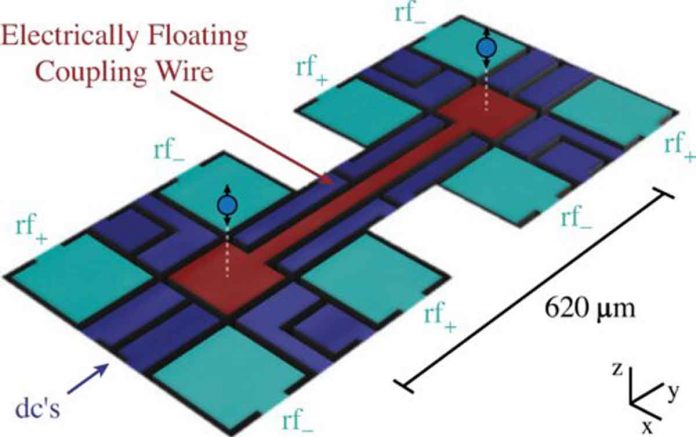Scientists have succeeded in coupling remotely located ions. They have used a wire conductor. Scientists have showed that individual particles can sense one another through the mirrored charges they generate through a metal wire. University of California at Berkeley scientists connected two ions over a small span.
They slowed the cooling in one by cooling the other. Scientists also successfully cooled a second ion by cooling the first. They applied a resonator to the wire. The study has been published in the journal Physical Review Letters and in the journal Nature.
Cooling trapped charged particles has become a major part of modern physics. From quantum research to conducting precise metrology. Scientists have begun conducting experiments. These experiments involve sympathetic cooling. In involve Coulomb interactions between particles at very close distances. These experiments have proven fruitful. Scientists were able to conduct similar experiments with particles that are farther apart.
Scientists have shown that a wire conductor can be used to accomplish that goal, in the two new efforts. They have used an approach that is similar in some respects to the old tin-can telephone made by children. Ions tend to grow warmer due to their interactions with the environment, when left alone. Both experiments were designed around the fact.
The first work involved trapping two calcium ions at a distance of 0.6 mm away from one another. The two traps were made by etching electrodes onto a planar wafer. Scientists connected a tiny wire between the two. They then cooled one of them while measuring the heat of the second. Scientists found that cooling the first ion slowed the rate of increase in heating of the second. The sympathetic cooling of the first ion had been conducted over the wire.
The second work was similar to the first. Scientists’ laser-cooled one of a pair of beryllium ions set 9 cm apart. Then they measured any changes to the second. They also added a resonator. It has increased the sympathetic cooling distance and strength. The result was cooling of the second ion.

